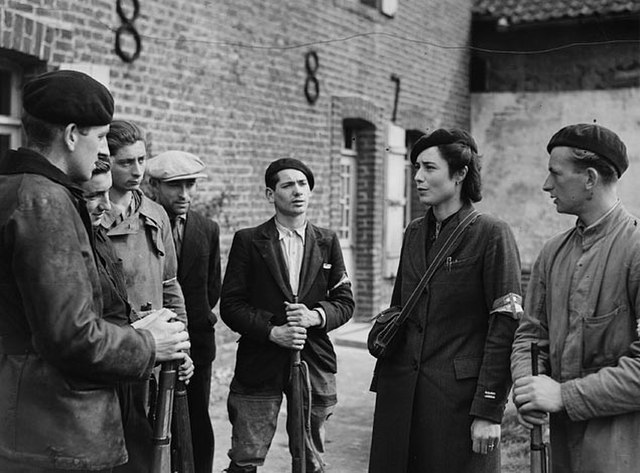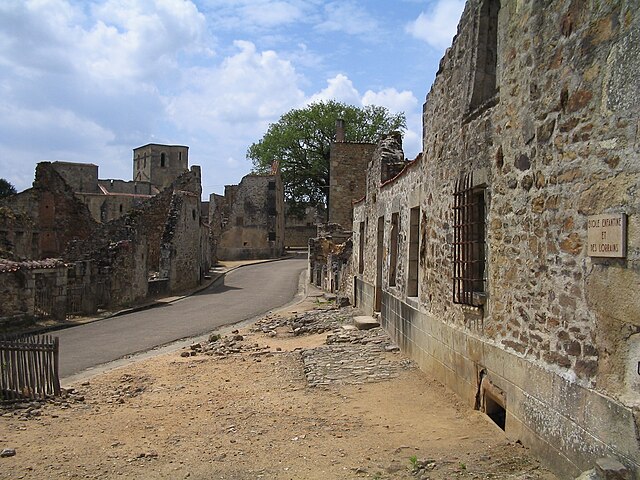French Forces of the Interior
The French Forces of the Interior were French resistance fighters in the later stages of World War II. Charles de Gaulle used it as a formal name for the resistance fighters. The change in designation of these groups to FFI occurred as France's status changed from that of an occupied nation to one of a nation being liberated by the Allied armies. As regions of France were liberated, the FFI were more formally organized into light infantry units and served as a valuable manpower addition to regular Free French forces. In this role, the FFI units manned less active areas of the front lines, allowing regular French army units to practice economy of force measures and mass their troops in decisive areas of the front. Finally, from October 1944 and with the greater part of France liberated, the FFI units were amalgamated into the French regular forces continuing the fight on the Western Front, thus ending the era of the French irregulars in World War II.

The Cross of Lorraine on the flag of the 2nd company, 1st battalion, FFI Finistere. It was founded by a group of French Scouts who joined the French Resistance in June 1940. The group carried out intelligence missions and the repatriations of allied airmen. In February 1944 it became part of the FFI and participated in the liberation of Quimper on August 8, 1944.
Members of the French resistance in Boulogne, September 1944.
FFI and Vercors Republic marked captured truck during the battle for Paris (1944), on exhibition during the 60th anniversary celebrations of the liberation.
Member of the FFI in Châteaudun with a Bren gun.
The French Resistance was a collection of groups that fought the Nazi occupation of France and the collaborationist Vichy régime in France during the Second World War. Resistance cells were small groups of armed men and women who conducted guerrilla warfare and published underground newspapers. They also provided first-hand intelligence information, and escape networks that helped Allied soldiers and airmen trapped behind Axis lines. The Resistance's men and women came from many parts of French society, including émigrés, academics, students, aristocrats, conservative Roman Catholics, Protestants, Jews, Muslims, liberals, anarchists, communists, and some fascists. The proportion of French people who participated in organized resistance has been estimated at from one to three percent of the total population.
French milice and resisters, July 1944
The cemetery and memorial in Vassieux-en-Vercors where, in July 1944, German Wehrmacht forces executed more than 200 people, in reprisal for the Maquis's armed resistance. The town was later awarded the Ordre de la Libération.
Identity document of French Resistance fighter Lucien Pélissou
The ruins of Oradour-sur-Glane, in the Limousin region of the Massif Central








